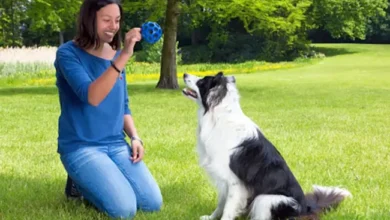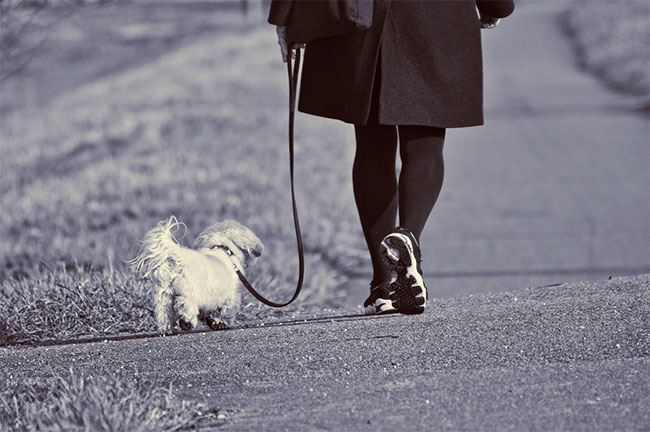
Dogs are a nice and wonderful pet and they, in fact, are the closest to humans by getting trained and sharing great moments. Dog trainers or owners work on training and incorporating necessary knowledge into the dogs for better communication and relationship. These trainings are done when the dog is at a young age and still being called a puppy. So many trainings but one is perhaps not seen as a training because most owners think it is innate of a puppy.
Making your puppy use a leash and walk around with it is never innate but something you have to train it for. A puppy is a living thing just like yourself and starting to use a leash and collar on its neck won’t come easy as it restricts the movement. Most puppies may get scared or afraid at the sight of a leash and as such will not be happy having it around their neck.
Getting it trained on it by gradually introducing the leash will help. Training will make it easy and allow the puppy walk well with a leash. If you care to know how to leash train your puppy, then you only need to read through this article to have a comprehensive knowledge and information about it.
1. Begin with a Training Collar
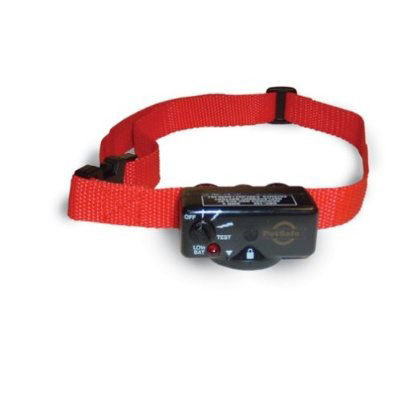
A dog training collar is a roundish or oval-like material worn on the neck of a dog to control or train it. The dog collars are made of various materials and it is perhaps the best way to start leash training your puppy. Leash are ropes attached to the harness or dog collars and starting with a collar alone will put you in line with your focus of leash training.
Get a dog collar that fits your puppy and allows about two fingers so that you can easily pull or draw it with the dog training collar. Note that you will have to change the collar as the puppy grows and gets bigger.
2. Get Harness for a Stubborn Puppy
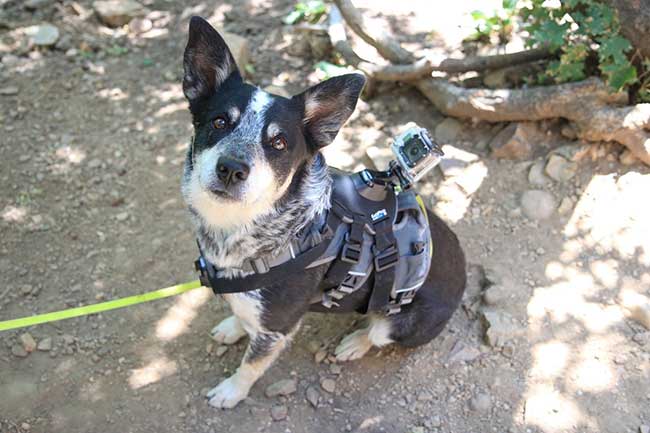
The dog collar is a good way to start leash training your puppy but if you have a stubborn or difficult puppy, then you may have to but a dog harness and pull it with it. A dog harness is inevitable for troublesome pups that are strong enough to pull you to their side or in the direction they wish to go.
The use of a training collar is mainly for younger puppies and they are first trained with the collar in the house. For older puppies, harness is better and wearing it around his neck outdoor is nice.
3. Introduce the Leash
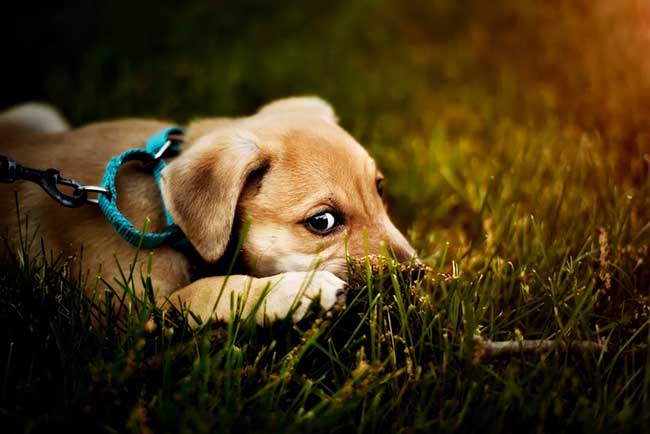
Haven used the collar and waited till the puppy gets comfortable with using and getting pulled by the dog collar or harness, you then need to introduce the leash. Introducing the leash is in two ways; making use of the puppy’s sense of smell and gradually getting the puppy to be cool with the leash.
Anyways you choose to use, note that you can’t start drawing or pulling the puppy immediately you attach the leash. Buy a suitable leash and take it close to the puppy’s nose so that it can smell and sniff it. This is a way of introducing the leash to the puppy. You can also introduce the leash to the puppy by attaching it to the collar or harness and then letting go of your own end of the leash.
Let the puppy play and run around with it. Call it at times and give a treat as a reward. Smelling and running around with the leash for some few days with some occasional commands from you will work well.
4. Walk your Puppy Around with a Leash
Doing this needs and requires you being very careful and remaining calm. When you are walking you puppy around the neighbourhood with a leash for the very first time, stay in front of the dog and keep your eyes at the puppy. Some pups will bark, spin or whine at the sight of you holding the other end of the leash but you must remain calm through all these. After some minutes, walk the puppy on and keep good attention on it.
If it looks and acts nervous, you need to stop and pet it. Do not hold the leash with too much force that it creates tension around the neck of the puppy. Do all these always when you are walking the puppy along the park to make it get used to the leash. At this time, you should not train your puppy about heeling. Allow it walk comfortably with the leash on and don’t bother about its understanding of when to stop and sit when you stop walking or when to continue when you continue walking.
5. Prevent Leash Pulling and Dragging
As the dog gets used to walking with the leash beside you, you may start noticing some bad behavioural tendencies and actions which must be prevented, stopped or avoided. The puppy may start pulling or dragging the leash with you wanting to go its own way and direction. When your puppy tries pulling or dragging you to its side or direction, don’t shout at it. Just stand still without moving anywhere.
Your Puppy will then learn that dragging or pulling the leash gets him to nowhere. You can then call him to your side and continue the walk. You may also notice that your dog just stands still and refuse to walk along with you. When this happens call him, pet and offer a treat and then continue walking.
6. Reward with a Treat
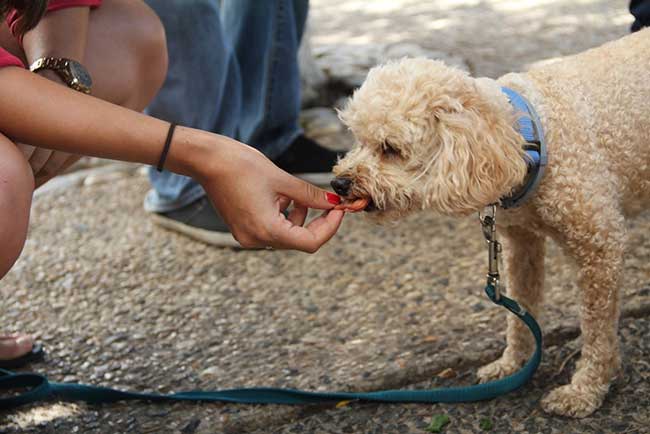
The process of leash training a puppy is quite interesting but it requires you to always offer treats to your puppy. Rewarding a puppy with a treat seem to be the only thing you have to repeat as you train the puppy and at every stage of training. Treats are important and it is needless telling you to always take your puppy treat pouch with you on a walk. The treats will help you get and retain the attention of the puppy as it is well known that puppies do not pay attention for long. Treats are reward to a puppy that behaves and does right. Treats are also useful in encouraging a puppy acts the way you desire or want. Offering a the treat as a reward also must be done well. Never allow your dog to start jumping up and down just to get a treat from you. It’s not cool and you should not do it.
7. Teach how to Heel
This is at a stage when your puppy has practically learnt to be comfortable with the leash. You then need to teach it how to notice your actions while walking together. Puppies can learn to stop and sit when it sees you stop to greet a neighbour or receive a call. You need to teach it and as usual, with a reward of some treats. Start by stopping after walking some distance, call it and gently command it to heel. Offer treats for obedience and petting when it disobeys. Do this every time you go on a walk.
8. Do a Distraction Test
The best and perfect way to be sure about how well your puppy has learnt to use the leash is by going for a walk at a place with distractions. Distractions may be created for the puppy at the early morning rush when neighbours are jogging on the street. Taking your puppy for a walk at that time means it will get distracted and you can then assess its obedience and composure at a place with distraction. Watch what the puppy does at this time and train it accordingly.
Conclusion
Puppy leash training is important and a basic training for your pet. The information above must be well understood and carried out for effectiveness. There are perfect timing associated with dog training and it should be noted by dog trainers owners.
A puppy of about 8 weeks can be leash trained to start with a collar. This should continue for a few weeks before a leash is introduced. At a time to use the leash, pay attention to the type of leash that is perfect for your puppy. Pay good attention to the size of the leash or the materials the leash is made from. Leaches made from nylon are of lightweight and as such can be used for younger puppies. Leather leashes are heavier and won’t fit for young puppies.
The leash size also matters when you choose a leash for your puppy. Thereafter, make use of the treats well for rewards at every stage of training. These are what makes a puppy get leash trained perfectly to provide the confidence you deserve when you walk it around anywhere even in places with some sort of distraction. Puppy leash training is one out of several topics available for dog trainers and owners on this website. You can browse through and read some other blogs to be informed about necessary tips for your dogs.
Anthony M. Rafael is a professional blogger and pet lover. He loves to help others people with their pet care and sharing his experience.

